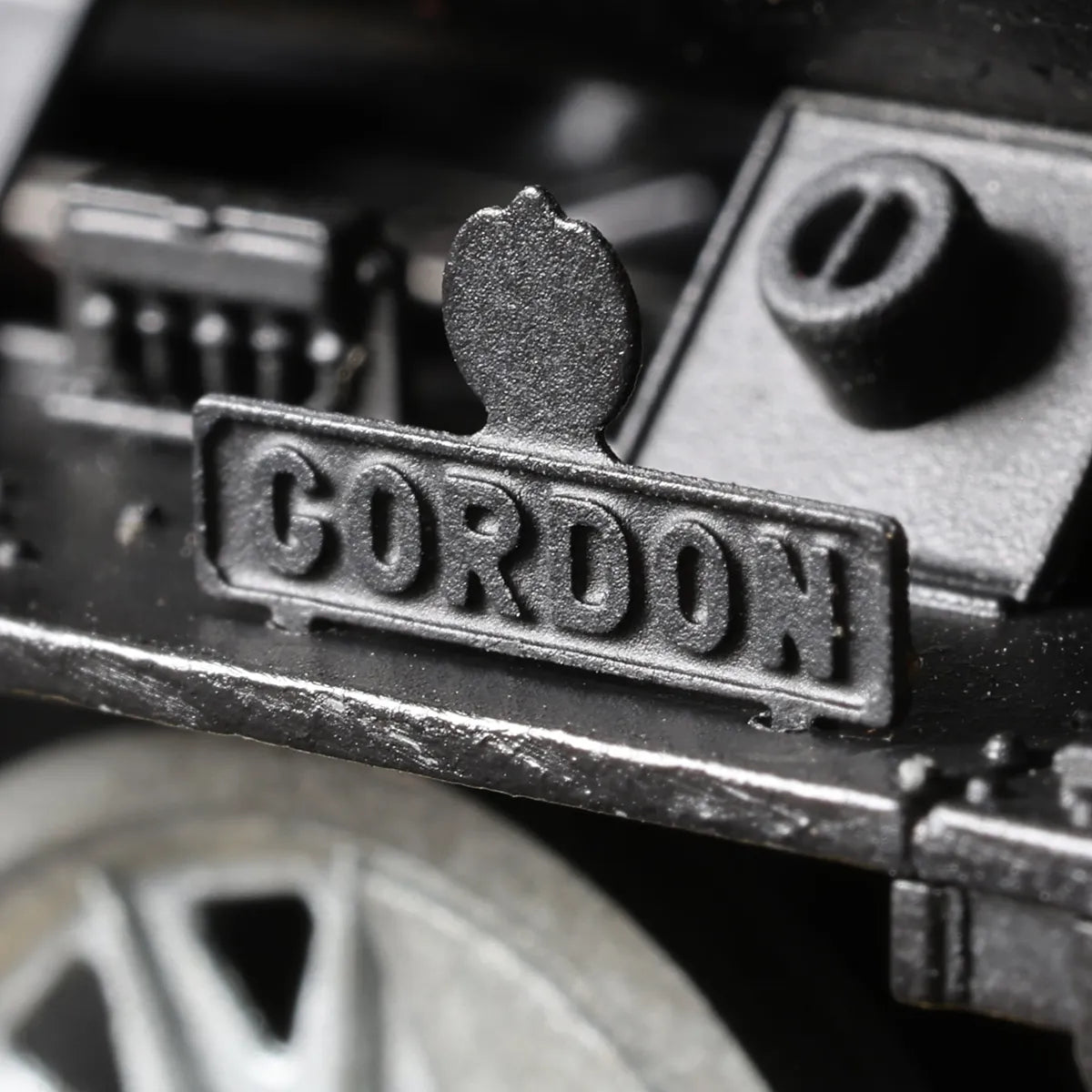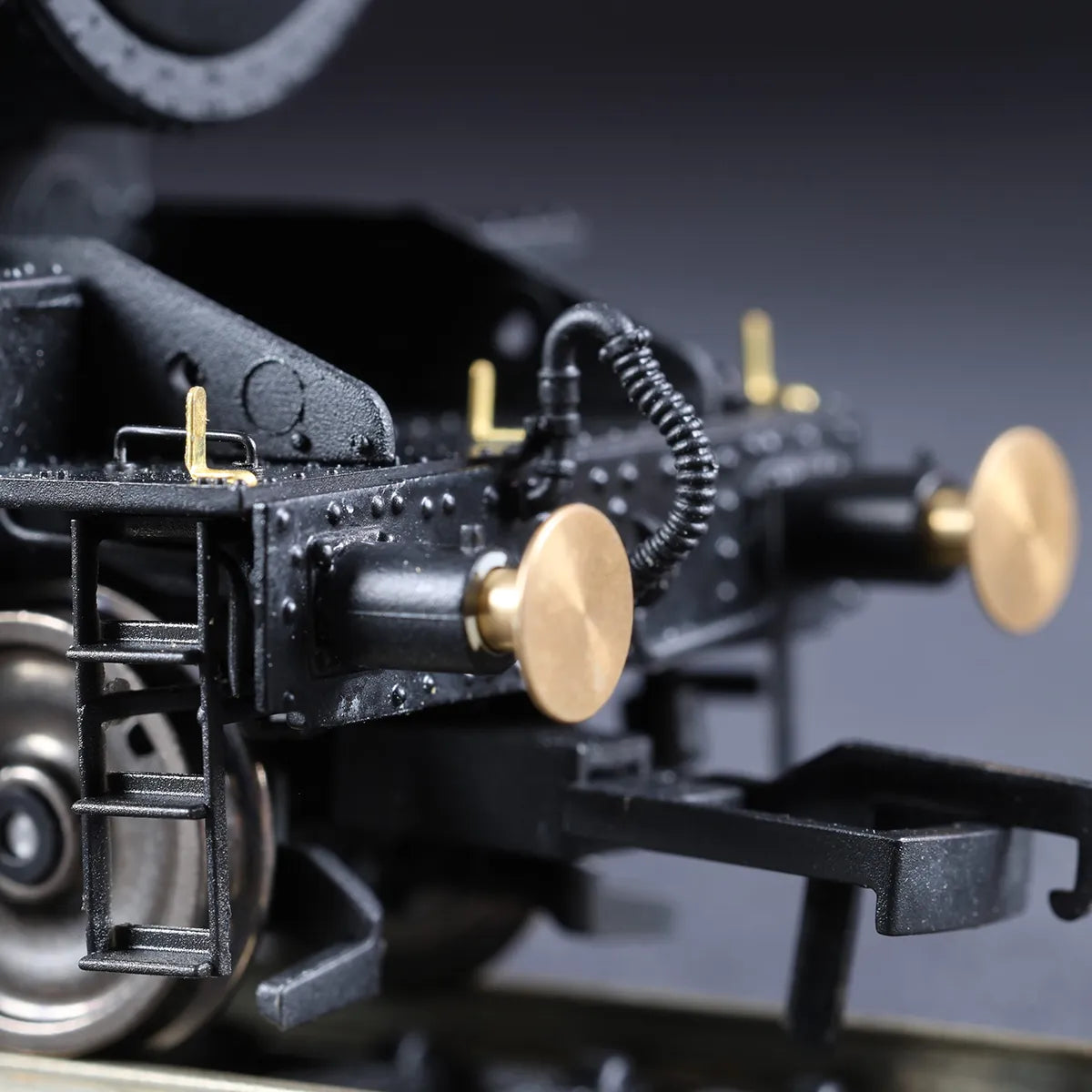Pre-Owned Finescale O Gauge
OO Gauge Projects
The War Department ‘Austerity’ 2-10-0 will be the first OO gauge locomotive to roll off Clark Railworks’ production line. We wanted to create a stir and capture the imagination when we announced our Quad Art coaches – and with an engine as impressive and fascinating as the WD 2-10-0, we’re aiming to do just that once again.
As with our O gauge ‘Black 5s’, we’ll be pushing the boundaries of detail and quality. Designed and engineered in the UK, our ‘Dubdees’ will feature die-cast construction, a multitude of separately fitted parts and a top-quality drivetrain. We’ll be catering for both left- and right-hand drive variants and a range of liveries, including LMR blue, WD khaki green, BR black (early and late crest) and Brunswick green.
The models will be available either DCC Ready (£295) or DCC Sound Fitted with a bespoke sound project (£TBA).
All versions are available to pre-order from clarkrailworks.com(either online, via email or over the phone), where you’ll also find full details and specifications.
Liveries
Release Date
Q4 2025
Liveries
Release Date
Q4 2025
The 'Austerity' 2-10-0 locomotives were developed from the 2-8-0 ‘WD’ locomotives by Robert Arthur ‘Robin’ Riddles for the Ministry of Supply. They were intended for use by the British Army overseas during and after World War 2. Two batches were built by the North British Locomotive Company at a cost of £12,500 each. The first batch of 100 were delivered between 1943 and 1944, whilst the second batch of 50 were delivered in 1945.
The design for the 2-10-0 was started in 1942. The brief was to be easy to prepare for work, easy to maintain and drive, and to be efficient. The locomotives were designed as a military tool and it was reported that Sir Alan Mount, the then Chief Inspecting Officer for Rail, had clearly stated that they weren’t to be used on Britain’s railways. Riddles retorted that he did not care if the engines were pushed into the sea once the war was won! With Nationalisation in 1948, the British Transport Commission decided to purchase 25 of the 2-10-0s that were still owned by the War Department. These were officially listed as running stock in December 1948, although most were kept in store until 1949-50. These BR examples were allocated to LMS sheds, mainly in Scotland; and survived until withdrawals between 1961 and 1962.
Of the original batch of 100, one was allocated to the Longmoor Military Railway, and 20 were shipped out to the Middle East. The LMS received the remaining 79 until they were needed in continental Europe in late 1944. The second batch of 50 entered service between March and September 1945 to bolster the fleet.
After the war 103 engines were sent to the Netherlands and reclassified as NS 5000 Class and operated by Nederlandse Spoorwegen (NS), 25 came back to the UK under British Railways ownership, 16 were bought by Hellenic State Railways (SEK) in Greece, known as SEK Class Λβ. Four ended up in Syria working for the Chemins de Fer Syriens (CFS) and known as CFS Class 150.6 and the final two, ‘600’ ‘Gordon’ and’ 601’ ‘ Kitchener’, resided at the Longmoor Military Railway.
Of the 150 locomotives built eight survive today. Not surprisingly the majority of the surviving 2-10-0’s are Greek examples, of which 2 have been brought back to the UK, bringing the total on UK soil to three. Both Λβ951 and Λβ
960, better known in the UK as ‘90775’ ‘The Royal Norfolk Regiment’ and ‘3672’ ‘Dame Vera Lynn’, were fortunate enough to be repatriated and join ex- LMR ‘600’ ‘Gordon’ back on home turf. ‘90775’ can be found hauling passengers through the picturesque views of north Norfolk on the North Norfolk Railway. It is currently the only operational UK based 2-10-0. ‘600’ ‘Gordon’ takes pride of place in the Engine House at Highley on the Severn Valley Railway where the locomotive can be seen up close. Finally ‘3672’ is currently undergoing a major refurbishment at the North Yorkshire Moors Railway having just received an overhauled tender.
Overseas the 5 Ex-pat WDs are in various states of repair. Λβ955 (3656), Λβ962 (3677), Λβ964 (3682) and Λβ958 (3659) are all stored in various states internally and externally in Thessaloniki - Greece, having operated on the Drama to Xanthi line. However, ‘73755’ is the sole surviving Dutch example that is proudly displayed in the Nederlands Spoorwegmuseum in Utrecht, currently in WD khaki green and was the 1000th WD locomotive to reach the continent.
The 'Austerity' 2-10-0 locomotives were developed from the 2-8-0 ‘WD’ locomotives by Robert Arthur ‘Robin’ Riddles for the Ministry of Supply. They were intended for use by the British Army overseas during and after World War 2. Two batches were built by the North British Locomotive Company at a cost of £12,500 each. The first batch of 100 were delivered between 1943 and 1944, whilst the second batch of 50 were delivered in 1945.
The design for the 2-10-0 was started in 1942. The brief was to be easy to prepare for work, easy to maintain and drive, and to be efficient. The locomotives were designed as a military tool and it was reported that Sir Alan Mount, the then Chief Inspecting Officer for Rail, had clearly stated that they weren’t to be used on Britain’s railways. Riddles retorted that he did not care if the engines were pushed into the sea once the war was won! With Nationalisation in 1948, the British Transport Commission decided to purchase 25 of the 2-10-0s that were still owned by the War Department. These were officially listed as running stock in December 1948, although most were kept in store until 1949-50. These BR examples were allocated to LMS sheds, mainly in Scotland; and survived until withdrawals between 1961 and 1962.
Of the original batch of 100, one was allocated to the Longmoor Military Railway, and 20 were shipped out to the Middle East. The LMS received the remaining 79 until they were needed in continental Europe in late 1944. The second batch of 50 entered service between March and September 1945 to bolster the fleet.
After the war 103 engines were sent to the Netherlands and reclassified as NS 5000 Class and operated by Nederlandse Spoorwegen (NS), 25 came back to the UK under British Railways ownership, 16 were bought by Hellenic State Railways (SEK) in Greece, known as SEK Class Λβ. Four ended up in Syria working for the Chemins de Fer Syriens (CFS) and known as CFS Class 150.6 and the final two, ‘600’ ‘Gordon’ and’ 601’ ‘ Kitchener’, resided at the Longmoor Military Railway.
Of the 150 locomotives built eight survive today. Not surprisingly the majority of the surviving 2-10-0’s are Greek examples, of which 2 have been brought back to the UK, bringing the total on UK soil to three. Both Λβ951 and Λβ
960, better known in the UK as ‘90775’ ‘The Royal Norfolk Regiment’ and ‘3672’ ‘Dame Vera Lynn’, were fortunate enough to be repatriated and join ex- LMR ‘600’ ‘Gordon’ back on home turf. ‘90775’ can be found hauling passengers through the picturesque views of north Norfolk on the North Norfolk Railway. It is currently the only operational UK based 2-10-0. ‘600’ ‘Gordon’ takes pride of place in the Engine House at Highley on the Severn Valley Railway where the locomotive can be seen up close. Finally ‘3672’ is currently undergoing a major refurbishment at the North Yorkshire Moors Railway having just received an overhauled tender.
Overseas the 5 Ex-pat WDs are in various states of repair. Λβ955 (3656), Λβ962 (3677), Λβ964 (3682) and Λβ958 (3659) are all stored in various states internally and externally in Thessaloniki - Greece, having operated on the Drama to Xanthi line. However, ‘73755’ is the sole surviving Dutch example that is proudly displayed in the Nederlands Spoorwegmuseum in Utrecht, currently in WD khaki green and was the 1000th WD locomotive to reach the continent.


